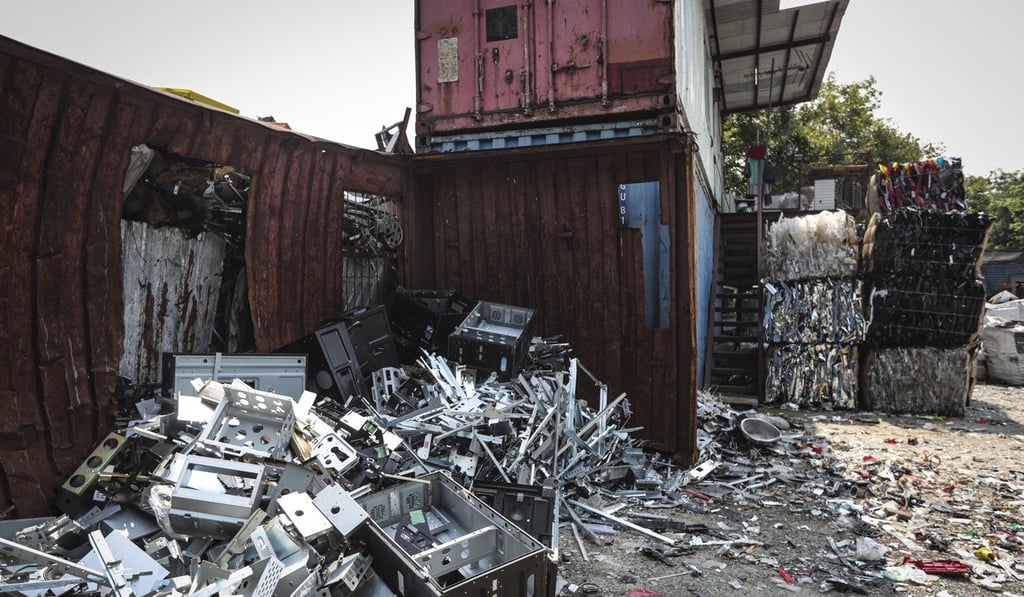Welcome to Hong Kong, the world’s dumping ground for electronic waste
...but an electronics recycling plant in the New Territories could soon be setting an example to the region

Down a dead end road in the New Territories area of Kong Nga Po, a stone’s throw from pig pens, fish ponds and an organic farm, a pile of still-smoking ash spills from a Maersk container.
A worker operating a crane is ripping open bags of cooled ash. Some ash falls into the bed of a truck, the rest into the vegetation along the road. The smell of burnt plastic is overpowering. Asked what has been burned, the worker responds: “It is from those things over there.” He points to blocks of baled plastic from old televisions, printers, computers and other electronic waste.
Most of that waste has ended up in Hong Kong from abroad. The site is one of hundreds across the New Territories where waste is processed, mostly on land zoned for agriculture. The workshops dismantle, separate and sort metals and plastics which are sold to traders who ship them elsewhere for further processing.
Sites that burn e-waste are an anomaly in Hong Kong, though a concerning one that – according to those who monitor the global trade in scrap electronics – demonstrates the need to implement controls on a sector that has until now been largely unregulated.
Shown photos of the site, Jim Puckett, Executive Director of Basel Action Network (BAN), which put the trackers in the e-waste from the United States that led investigators to the location, said he had “never seen anything like it” in Hong Kong.
